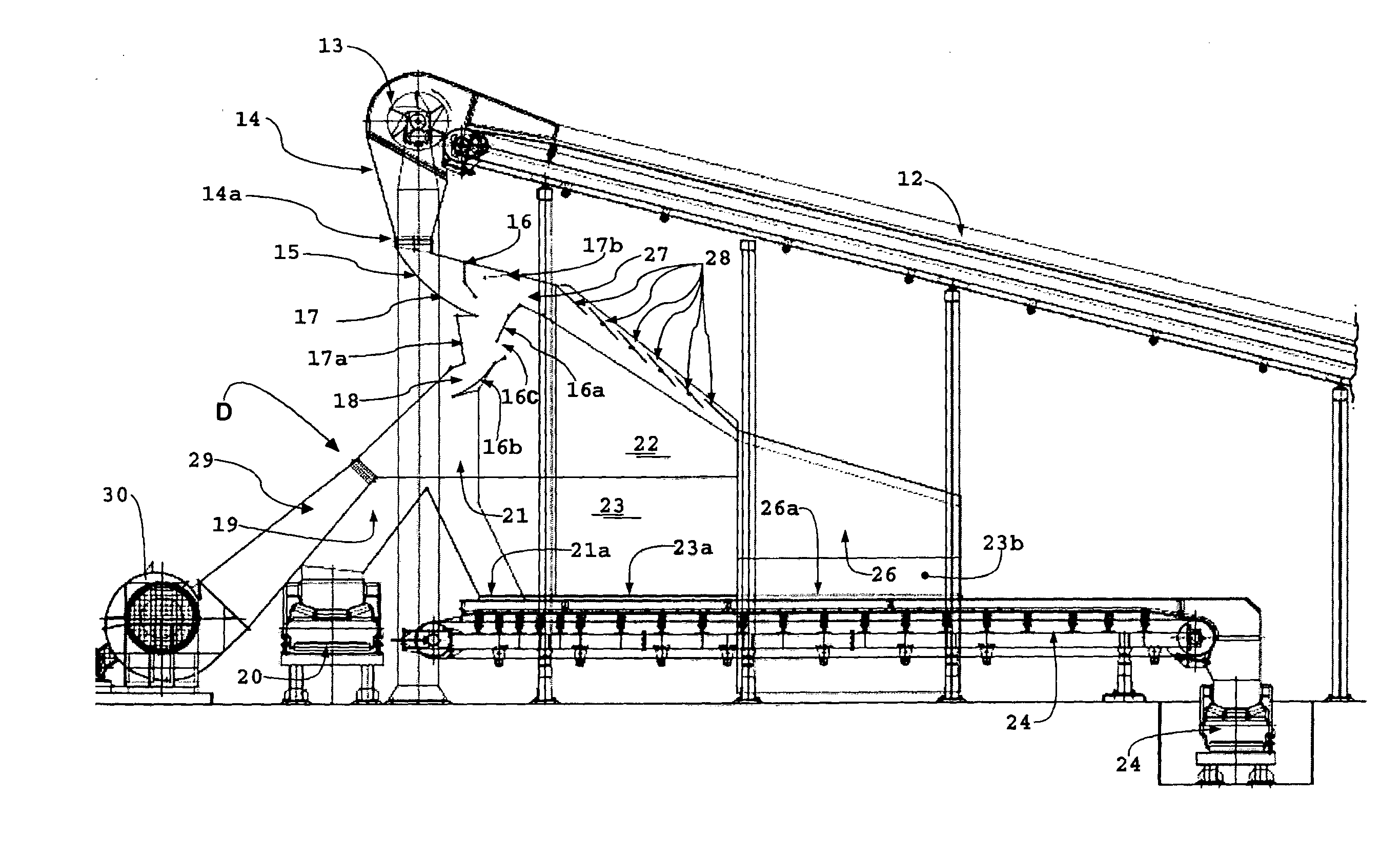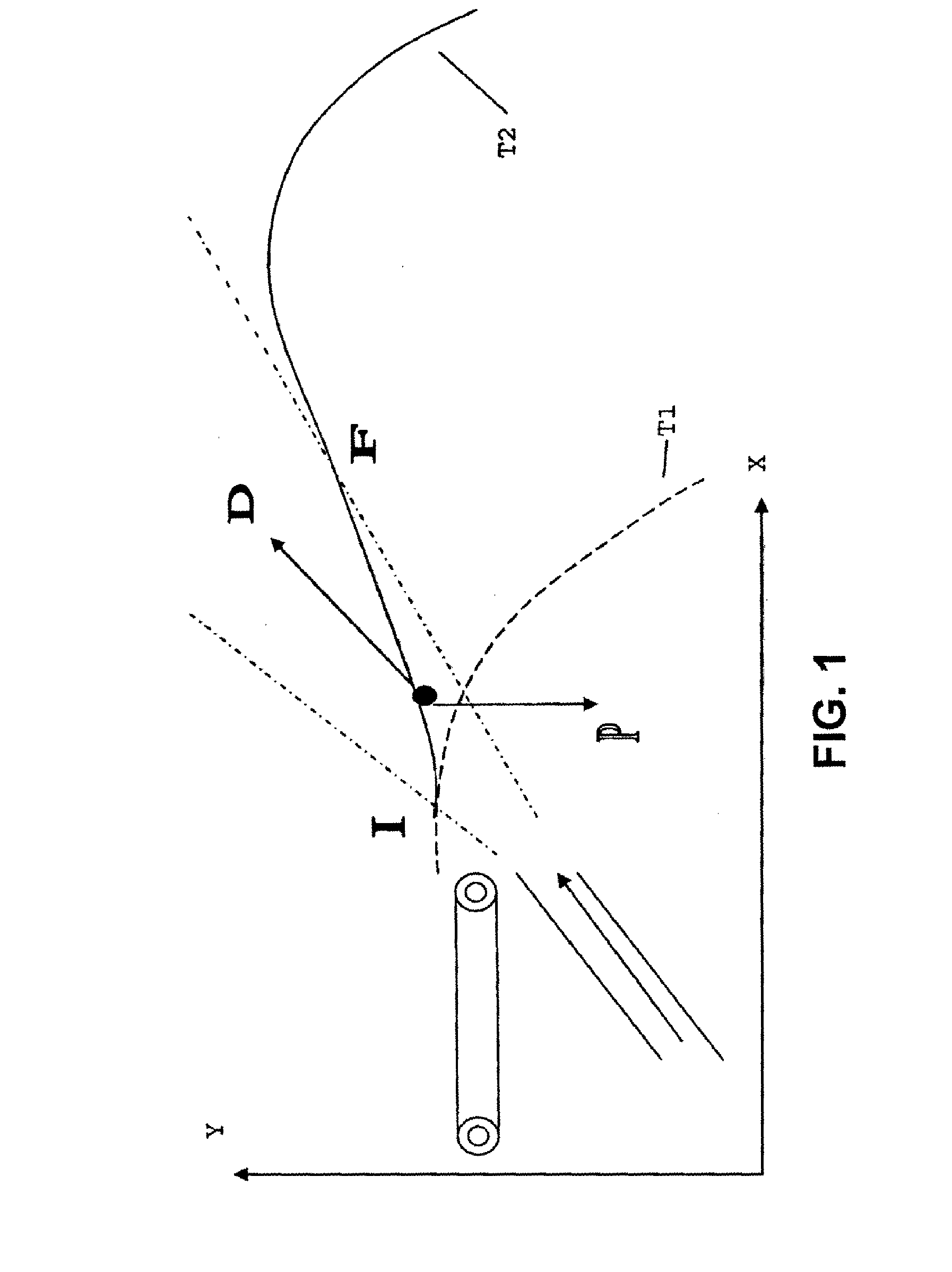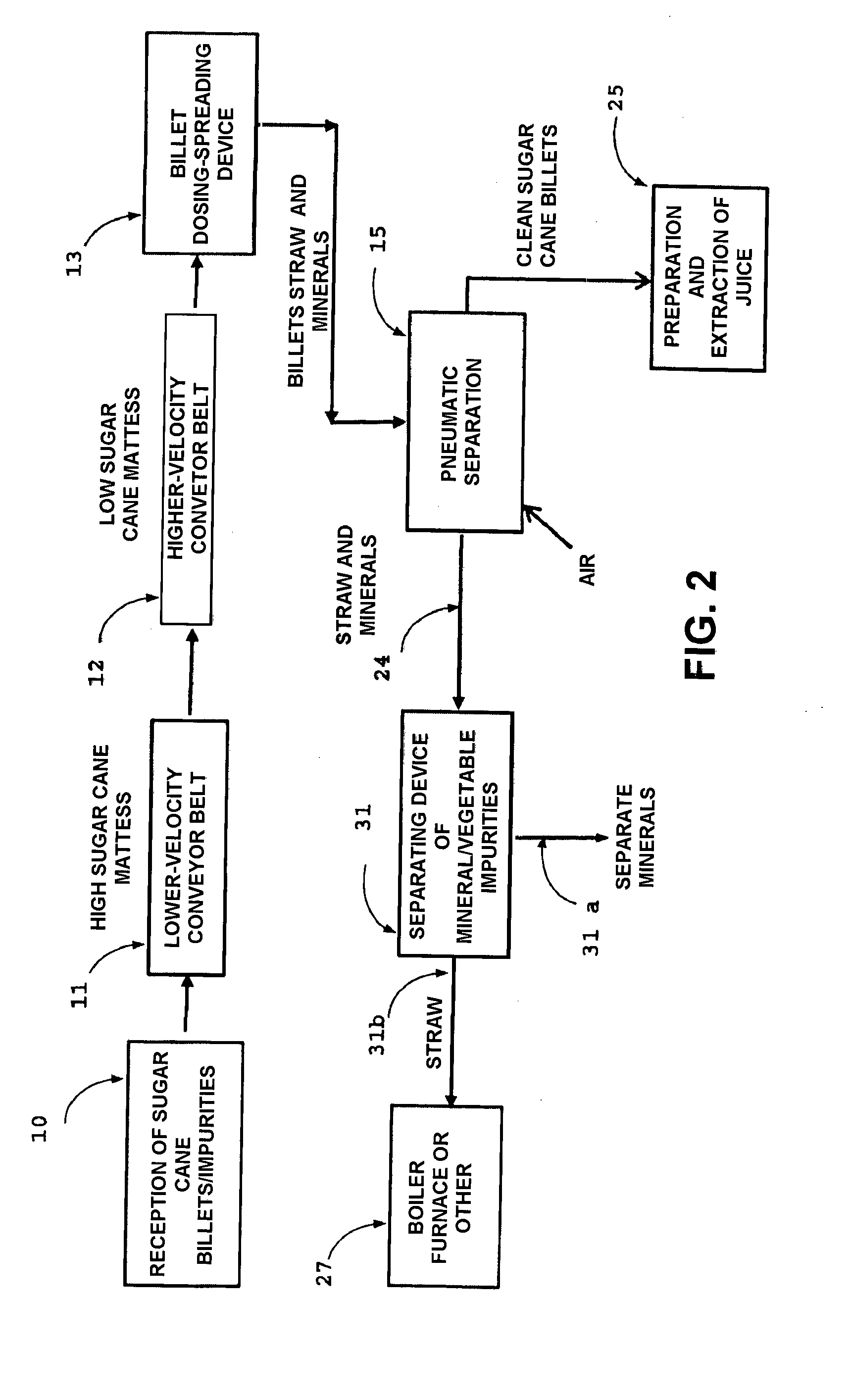Process and equipment for the dry cleaning of sugarcane harvested in billets and containing straw and other impurities
a technology of dry cleaning and sugarcane, which is applied in the direction of food treatment, liquid carbonaceous fuels, grading, etc., can solve the problems of large volume of water, increase of system preparation wear, and large amount of sugar loss, and achieves a high separation efficiency and greater spread
- Summary
- Abstract
- Description
- Claims
- Application Information
AI Technical Summary
Benefits of technology
Problems solved by technology
Method used
Image
Examples
Embodiment Construction
[0050]As illustrated in the drawings, the present dry-cleaning equipment comprise, initially, a reception station 10 to receive the harvested sugarcane carrying mineral and vegetable impurities.
[0051]The reception station 10 allows the sugarcane, received therein, to be discharged on a first lower-speed conveyor belt 11, forming thereon a load consisting of sugarcane and impurities in the form of a first sugarcane and impurity mattress, with about 1 to 1.5 m of height.
[0052]The first lower-speed conveyor belt 11 discharges the first sugarcane and impurity mattress on a second higher-speed conveyor belt 12, onto which is formed a second sugarcane and impurity mattress, having about one third to one fifth of the height of the first sugarcane mattress in the first conveyor belt 11. Generally, the height of the second sugarcane mattress on the second conveyor belt 12 is of about 30-40 cm.
[0053]The second higher-speed conveyor belt 12 discharges, continuously and uniformly, the second ma...
PUM
| Property | Measurement | Unit |
|---|---|---|
| height | aaaaa | aaaaa |
| height | aaaaa | aaaaa |
| speed | aaaaa | aaaaa |
Abstract
Description
Claims
Application Information
 Login to View More
Login to View More - R&D
- Intellectual Property
- Life Sciences
- Materials
- Tech Scout
- Unparalleled Data Quality
- Higher Quality Content
- 60% Fewer Hallucinations
Browse by: Latest US Patents, China's latest patents, Technical Efficacy Thesaurus, Application Domain, Technology Topic, Popular Technical Reports.
© 2025 PatSnap. All rights reserved.Legal|Privacy policy|Modern Slavery Act Transparency Statement|Sitemap|About US| Contact US: help@patsnap.com



